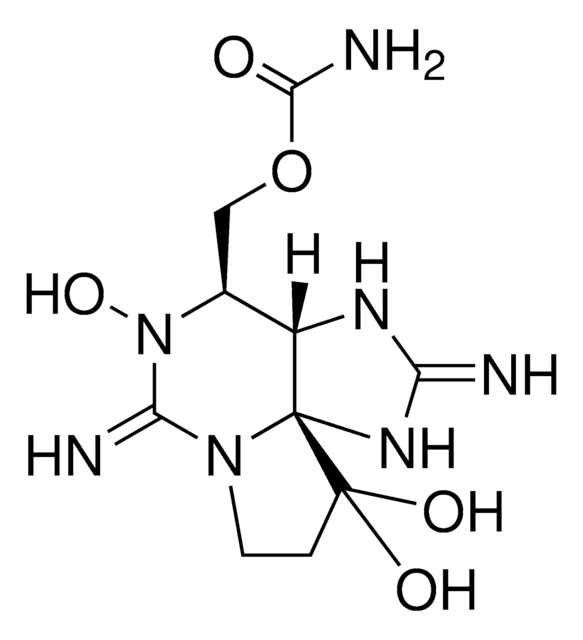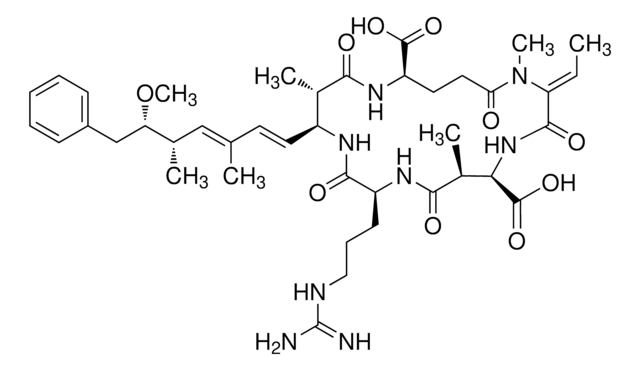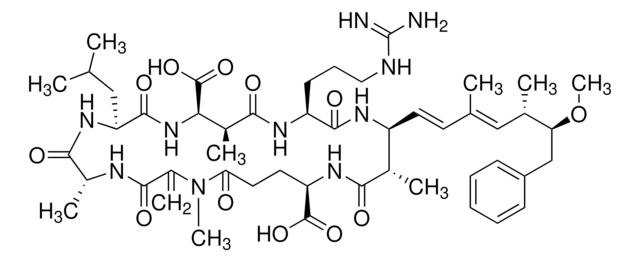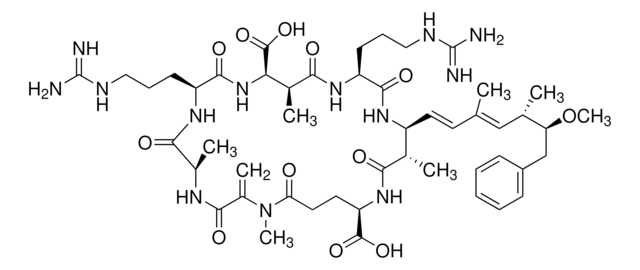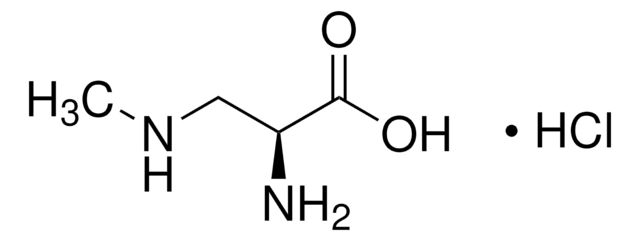Wichtige Dokumente
32087
Cylindrospermopsin -Lösung
10 μg/mL in H2O, PESTANAL®, analytical standard
Synonym(e):
6-[(R)-Hydroxy-[(2aS,3R,4S,5aS,7R)-2,2a,3,4,5,5a,6,7-octahydro-3-methyl-4-(sulfooxy)-1H-1,8,8b-triazaacenaphthylen-7-yl]-methyl]-2,4(1H,3H)-pyrimidindion
About This Item
Empfohlene Produkte
Qualität
analytical standard
Qualitätsniveau
Produktlinie
PESTANAL®
Haltbarkeit
limited shelf life, expiry date on the label
Konzentration
10 μg/mL in H2O
Methode(n)
HPLC: suitable
gas chromatography (GC): suitable
Anwendung(en)
cleaning products
cosmetics
food and beverages
personal care
Format
single component solution
Lagertemp.
−20°C
SMILES String
C[C@H]1[C@H](C[C@@H]2C[C@@H](N=C3NC[C@H]1N23)[C@@H](O)C4=CC(=O)NC(=O)N4)OS(O)(=O)=O
InChI
1S/C15H21N5O7S/c1-6-10-5-16-14-17-8(13(22)9-4-12(21)19-15(23)18-9)2-7(20(10)14)3-11(6)27-28(24,25)26/h4,6-8,10-11,13,22H,2-3,5H2,1H3,(H,16,17)(H,24,25,26)(H2,18,19,21,23)/t6-,7+,8-,10-,11+,13+/m1/s1
InChIKey
LHJPHMKIGRLKDR-YUQKHPEDSA-N
Suchen Sie nach ähnlichen Produkten? Aufrufen Leitfaden zum Produktvergleich
Anwendung
Rechtliche Hinweise
Sie haben nicht das passende Produkt gefunden?
Probieren Sie unser Produkt-Auswahlhilfe. aus.
Lagerklassenschlüssel
10 - Combustible liquids
Flammpunkt (°F)
Not applicable
Flammpunkt (°C)
Not applicable
Hier finden Sie alle aktuellen Versionen:
Besitzen Sie dieses Produkt bereits?
In der Dokumentenbibliothek finden Sie die Dokumentation zu den Produkten, die Sie kürzlich erworben haben.
Kunden haben sich ebenfalls angesehen
Unser Team von Wissenschaftlern verfügt über Erfahrung in allen Forschungsbereichen einschließlich Life Science, Materialwissenschaften, chemischer Synthese, Chromatographie, Analytik und vielen mehr..
Setzen Sie sich mit dem technischen Dienst in Verbindung.
